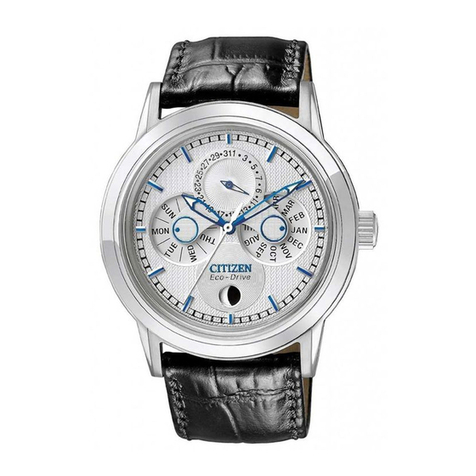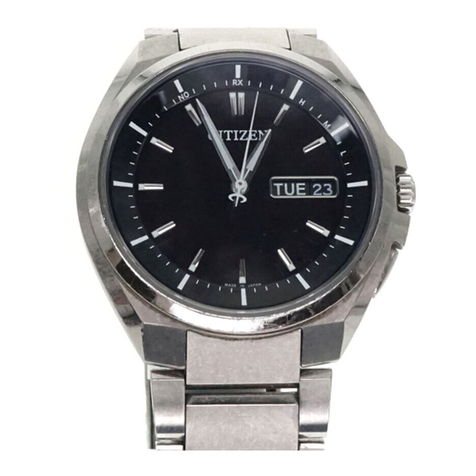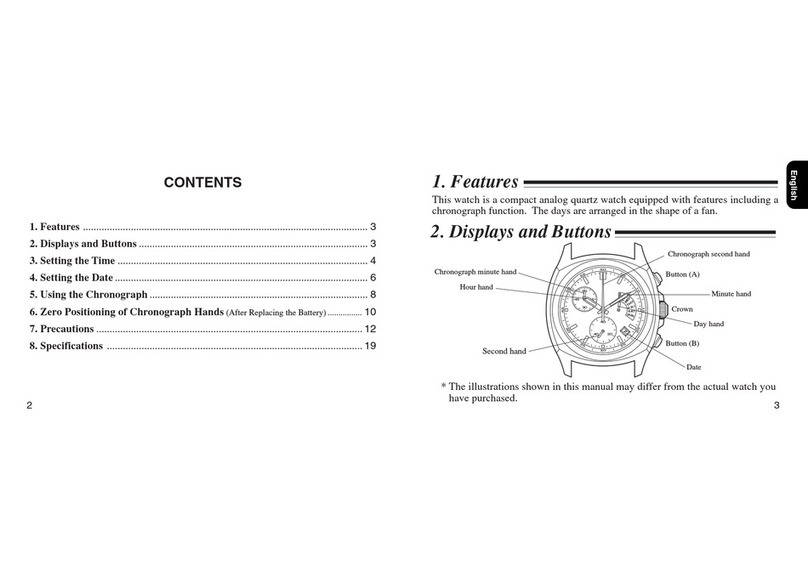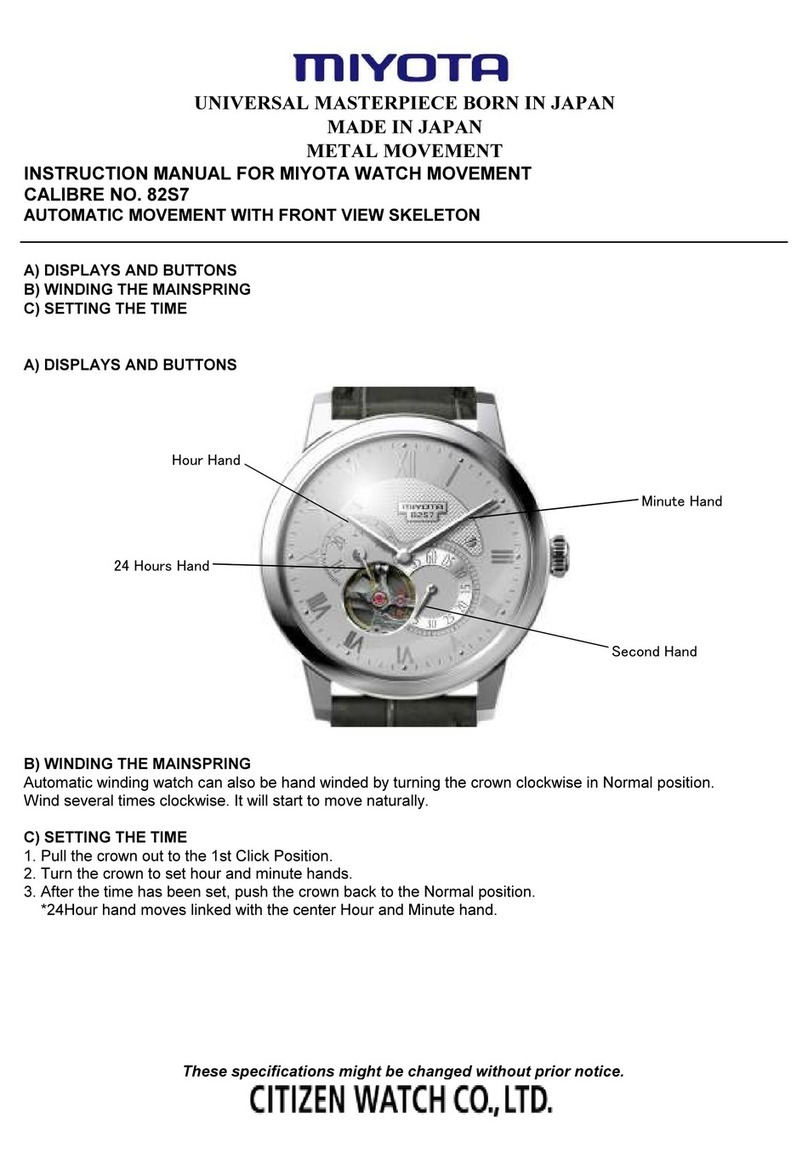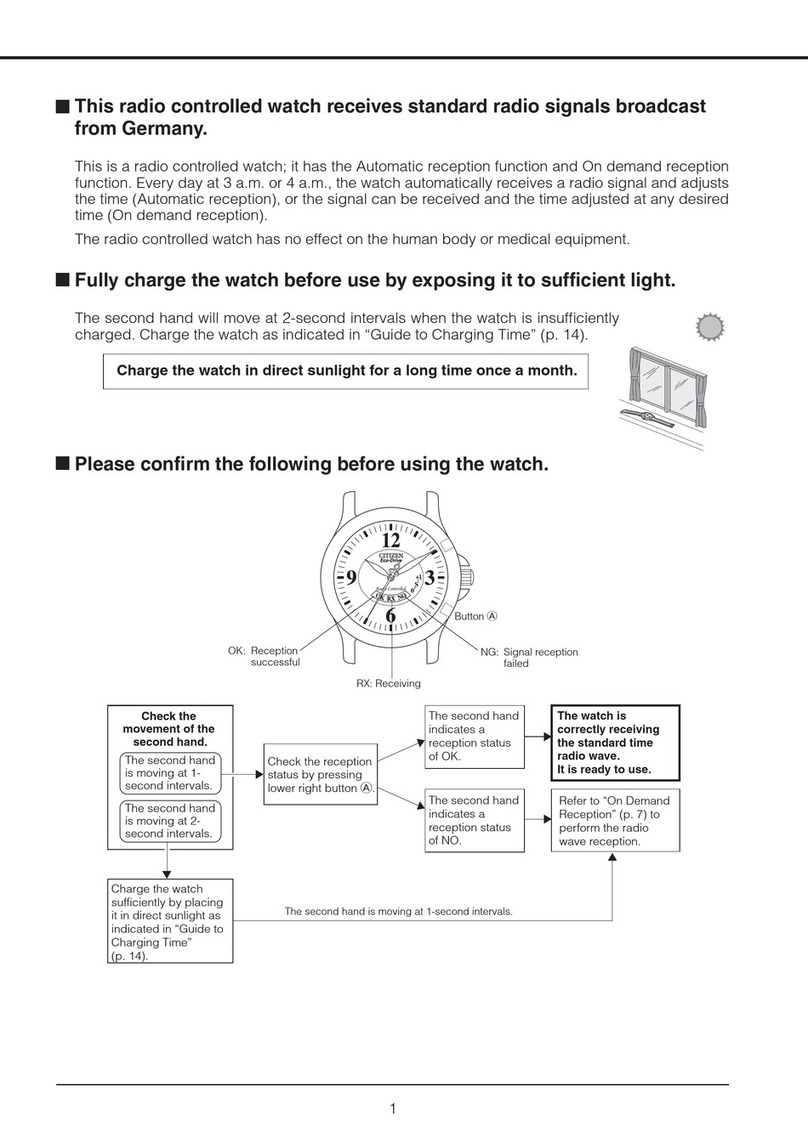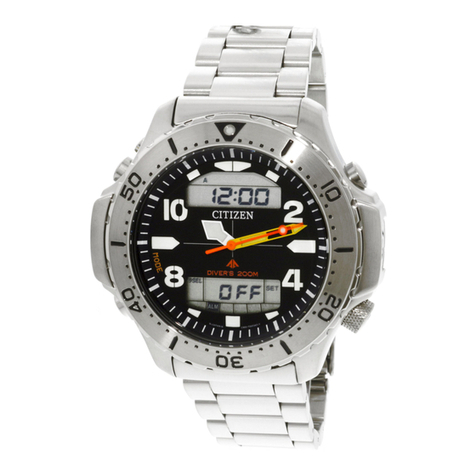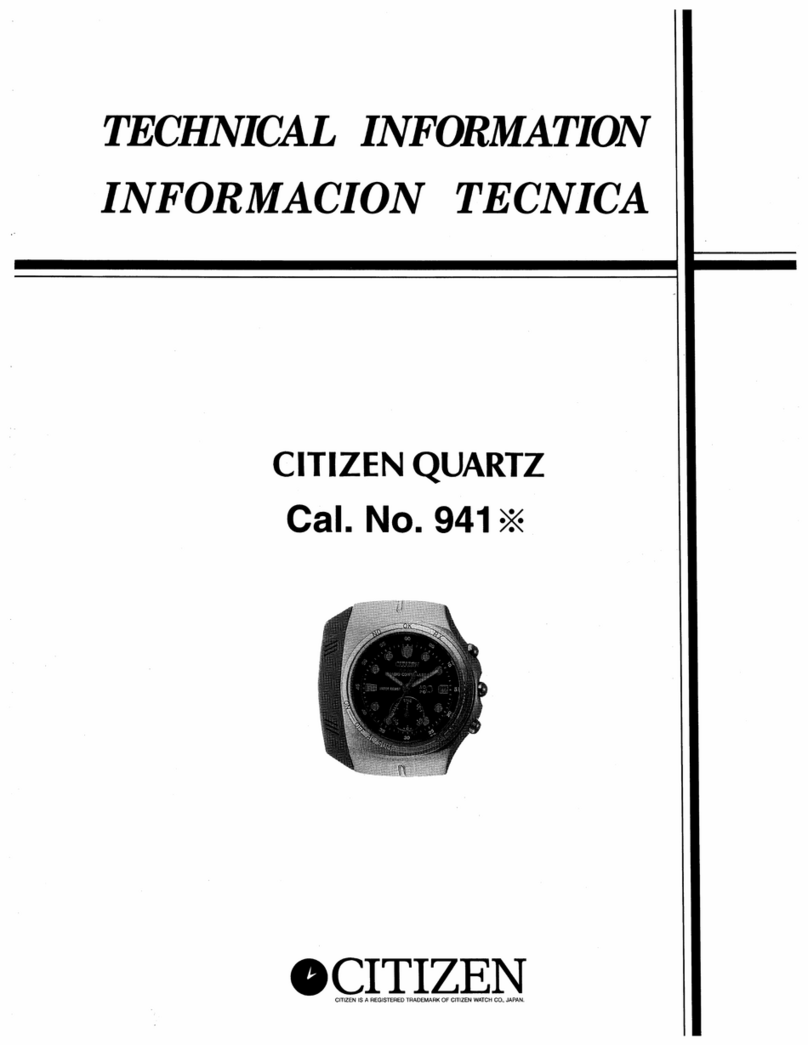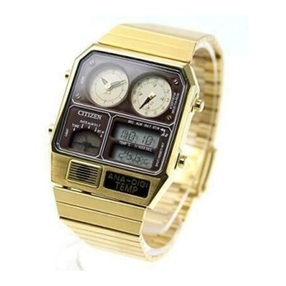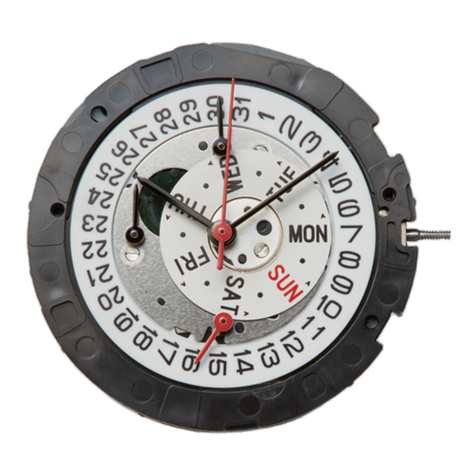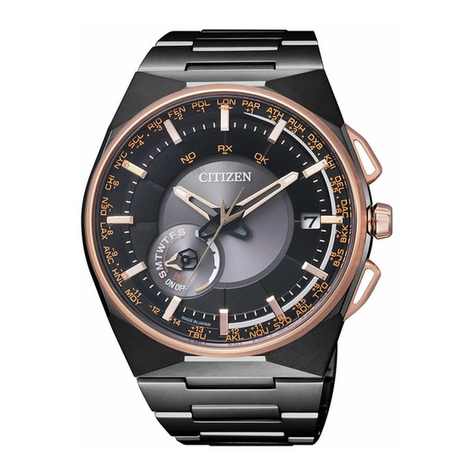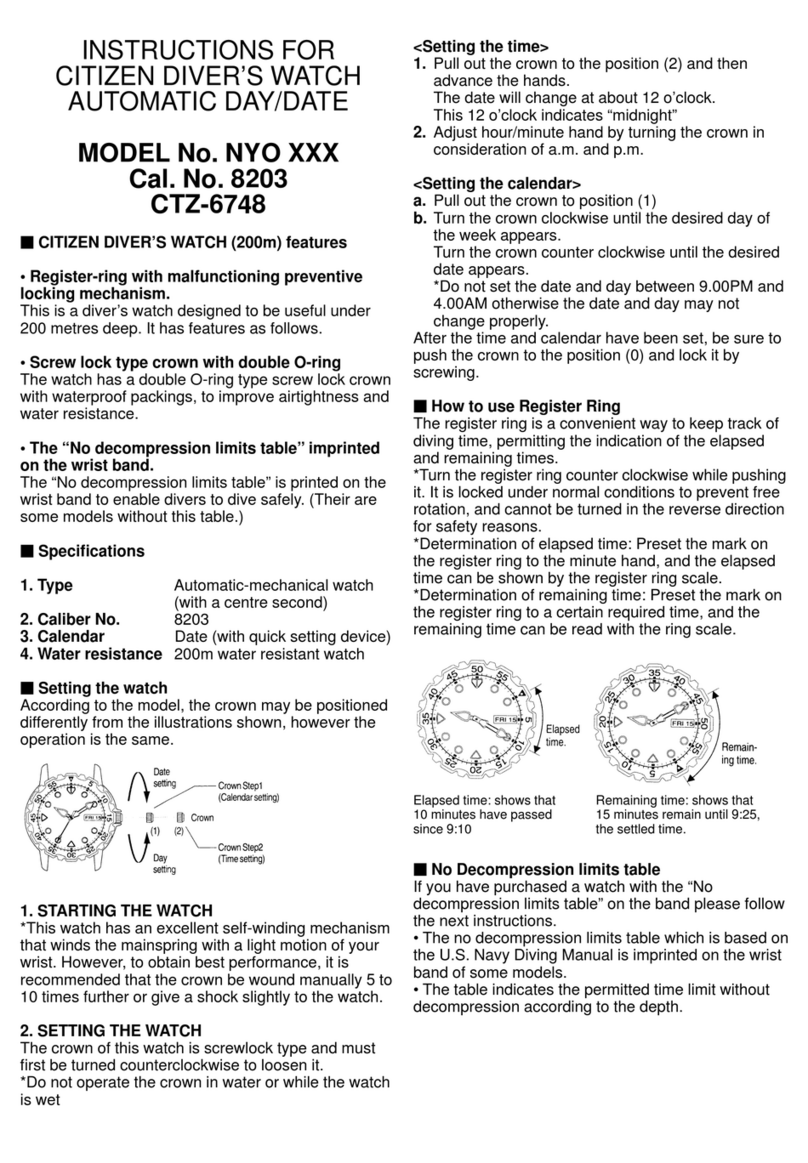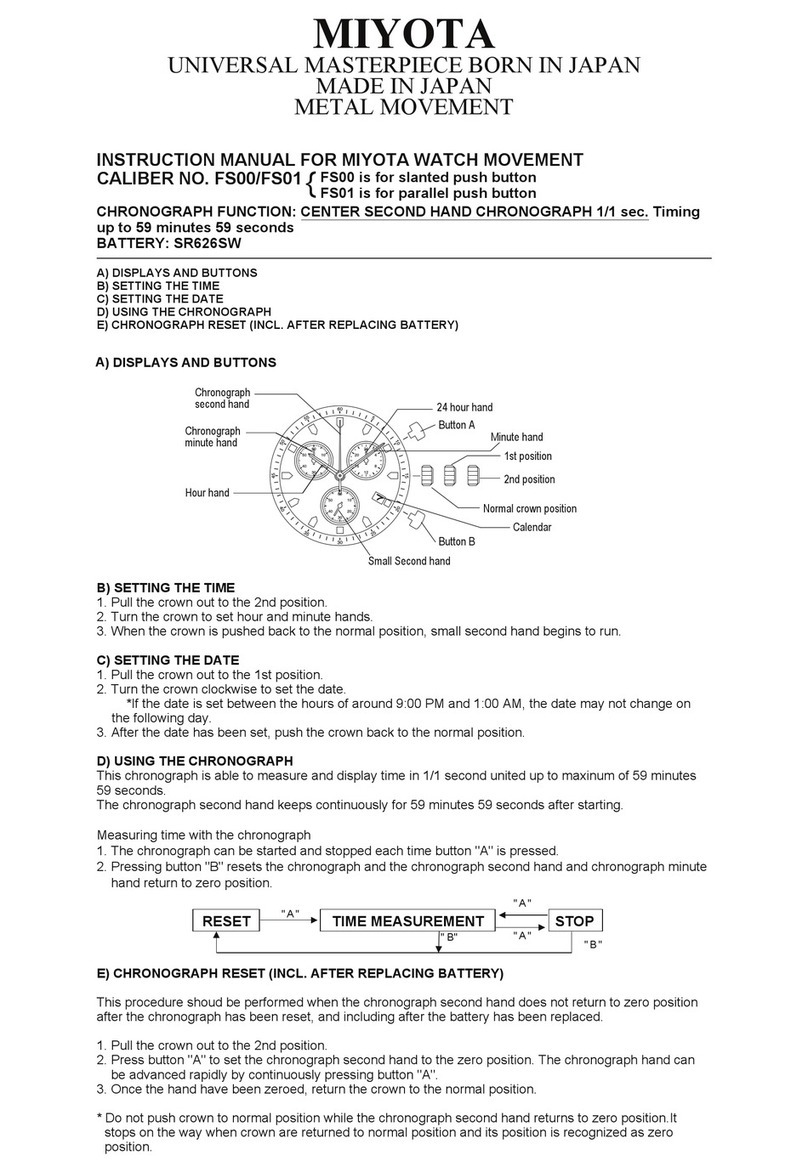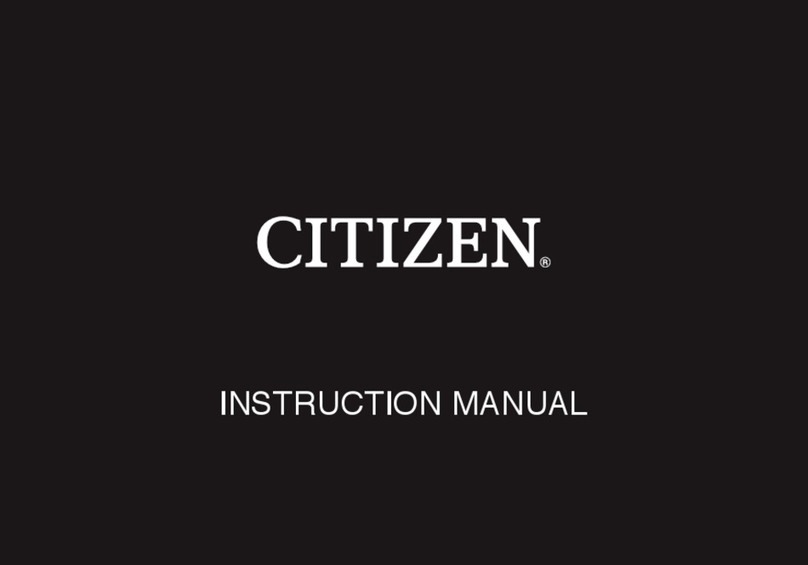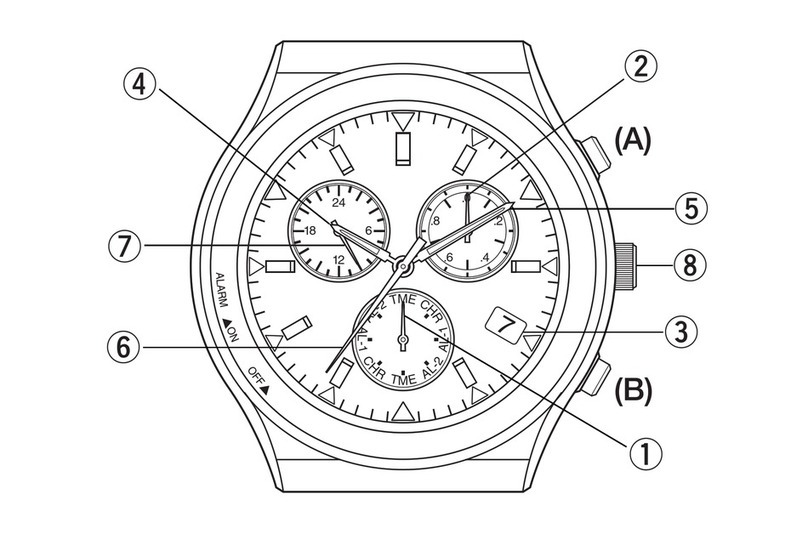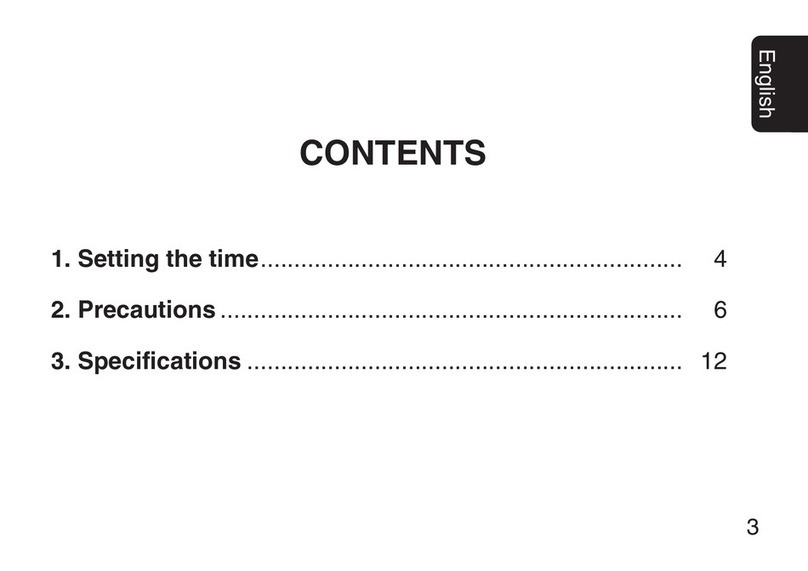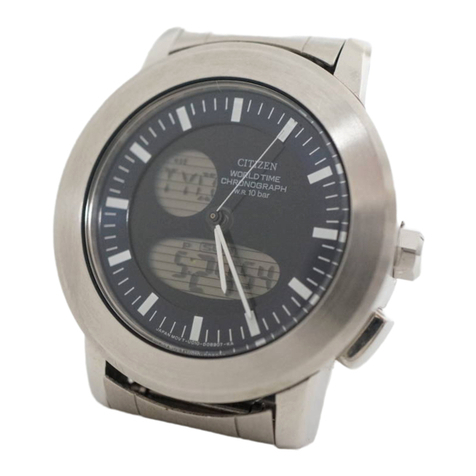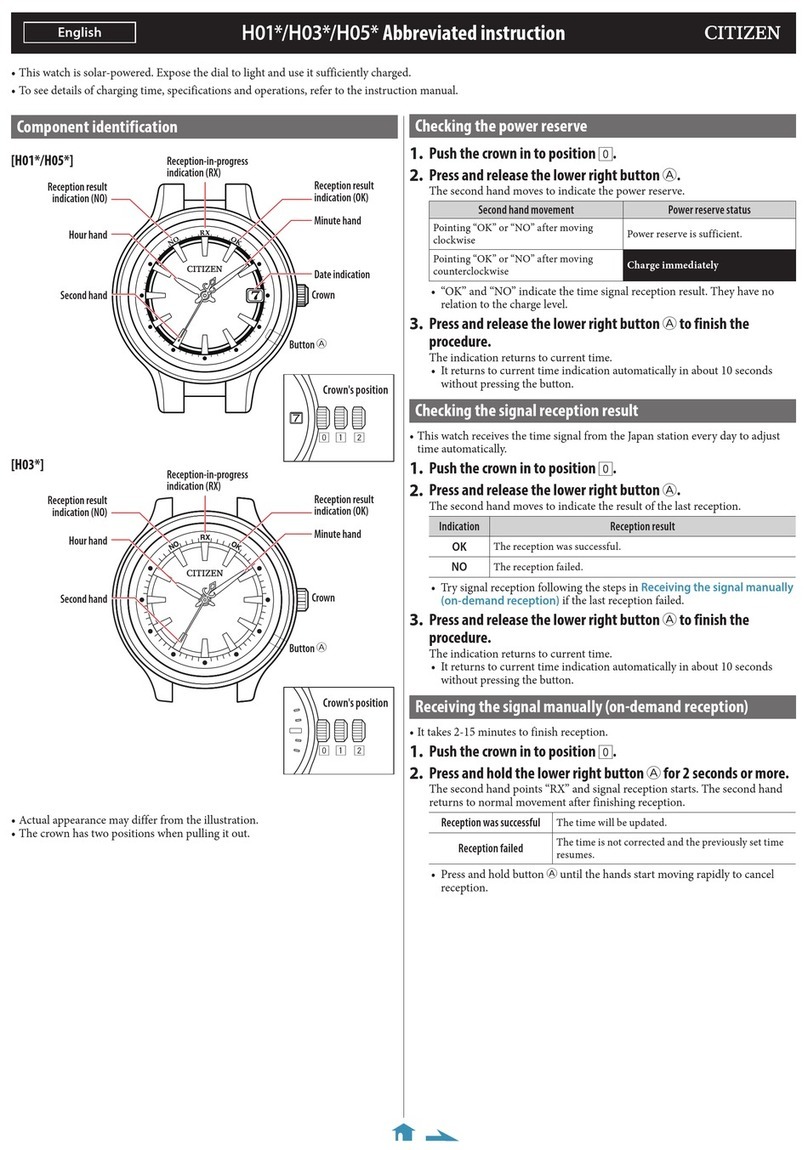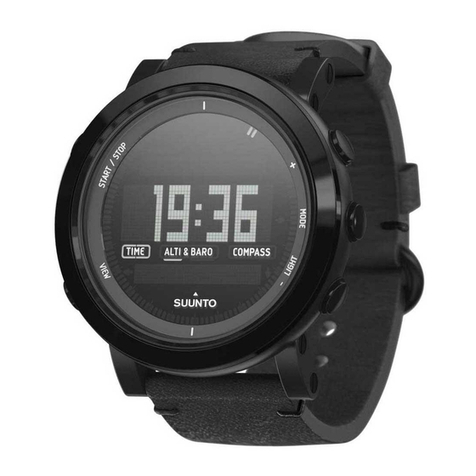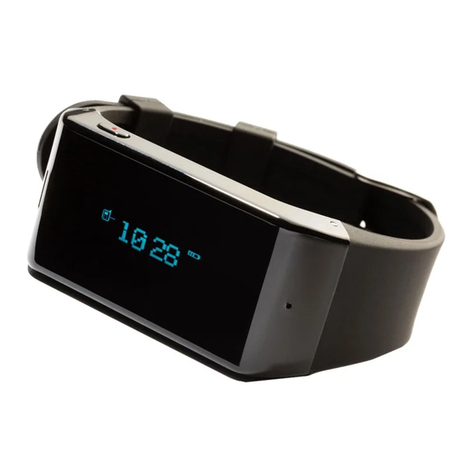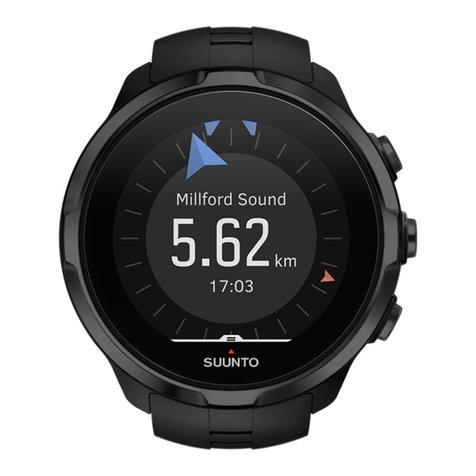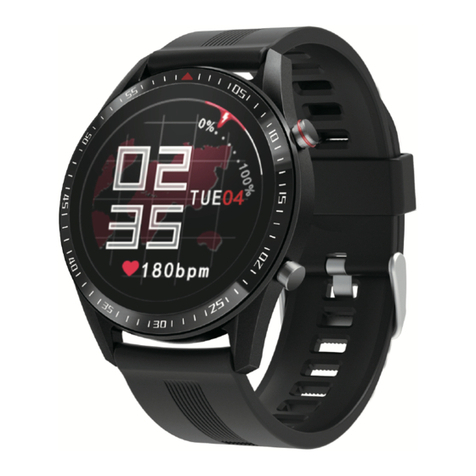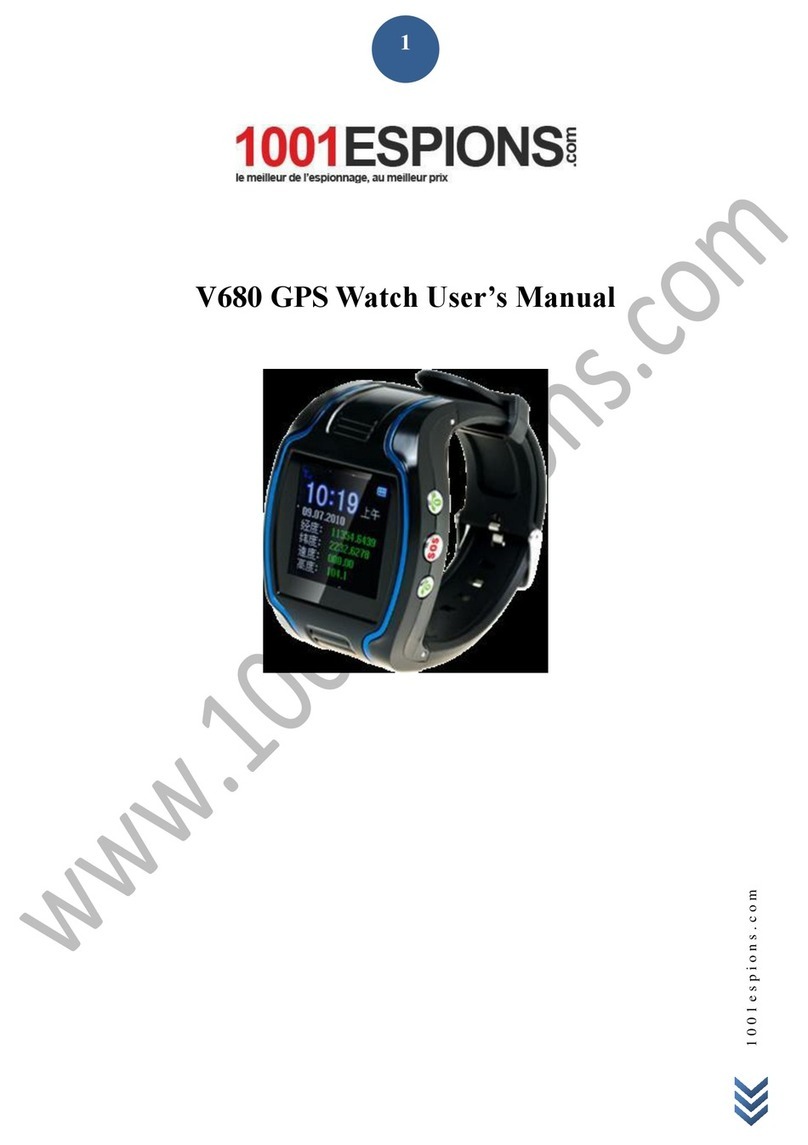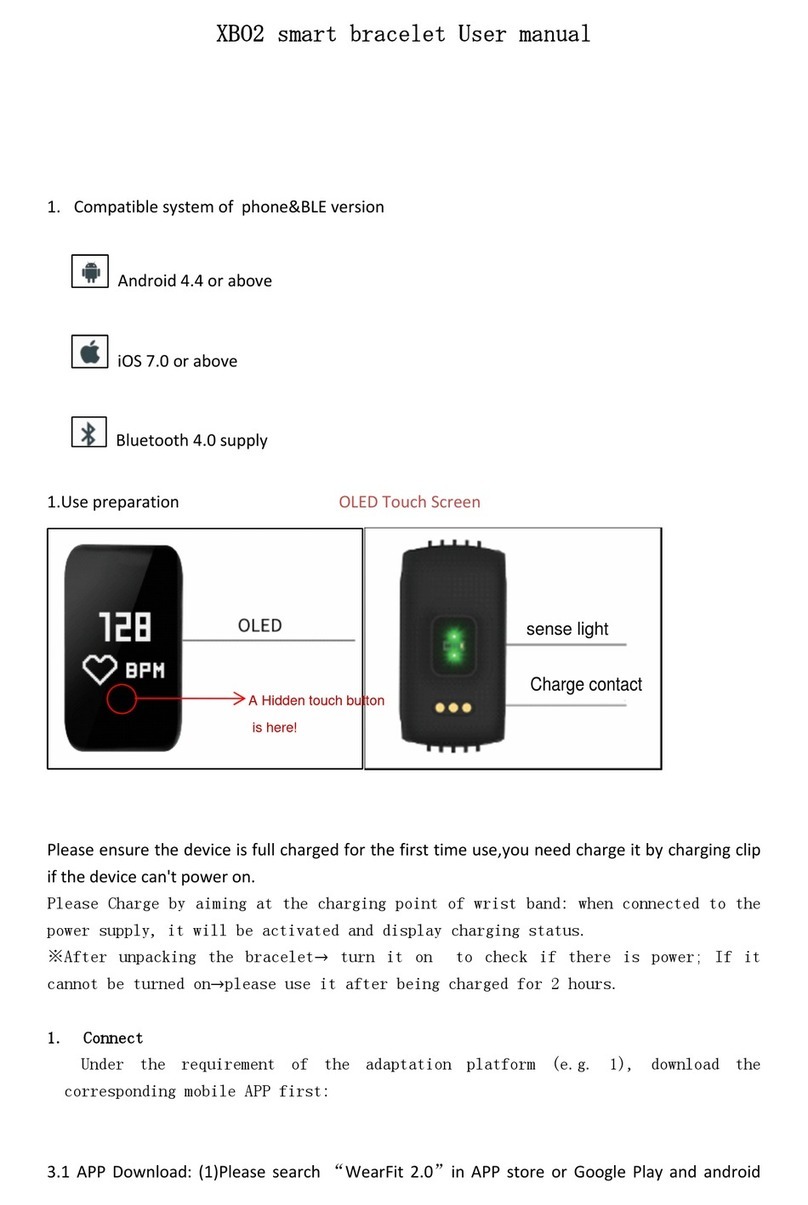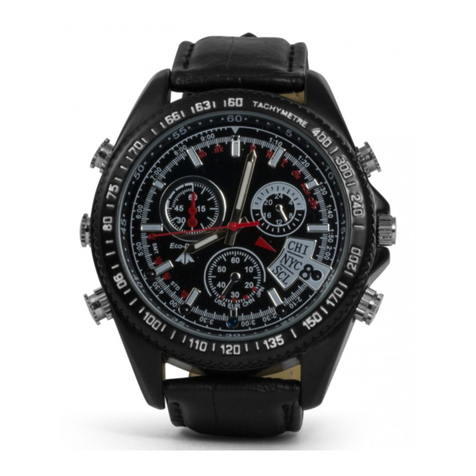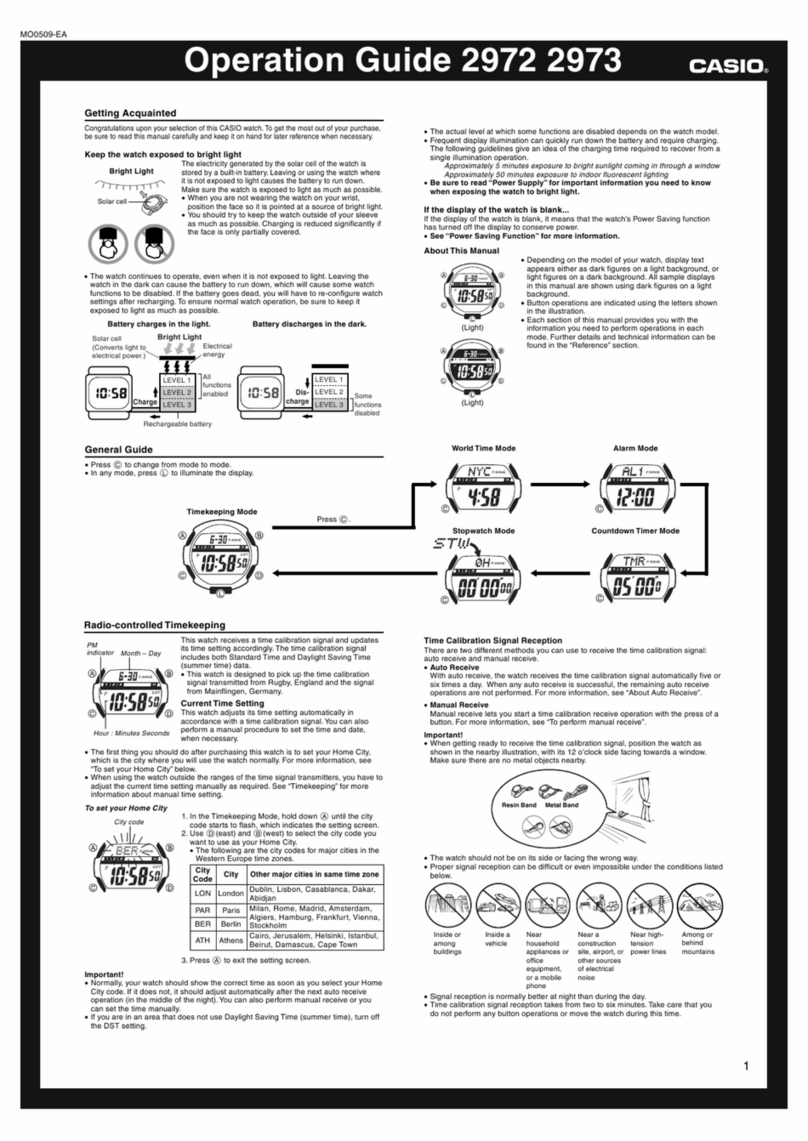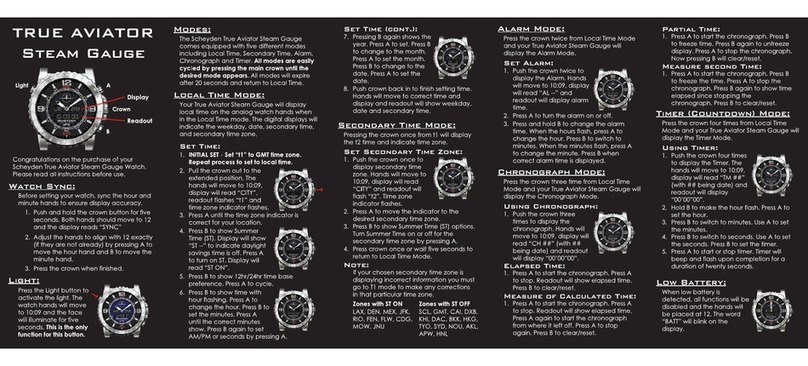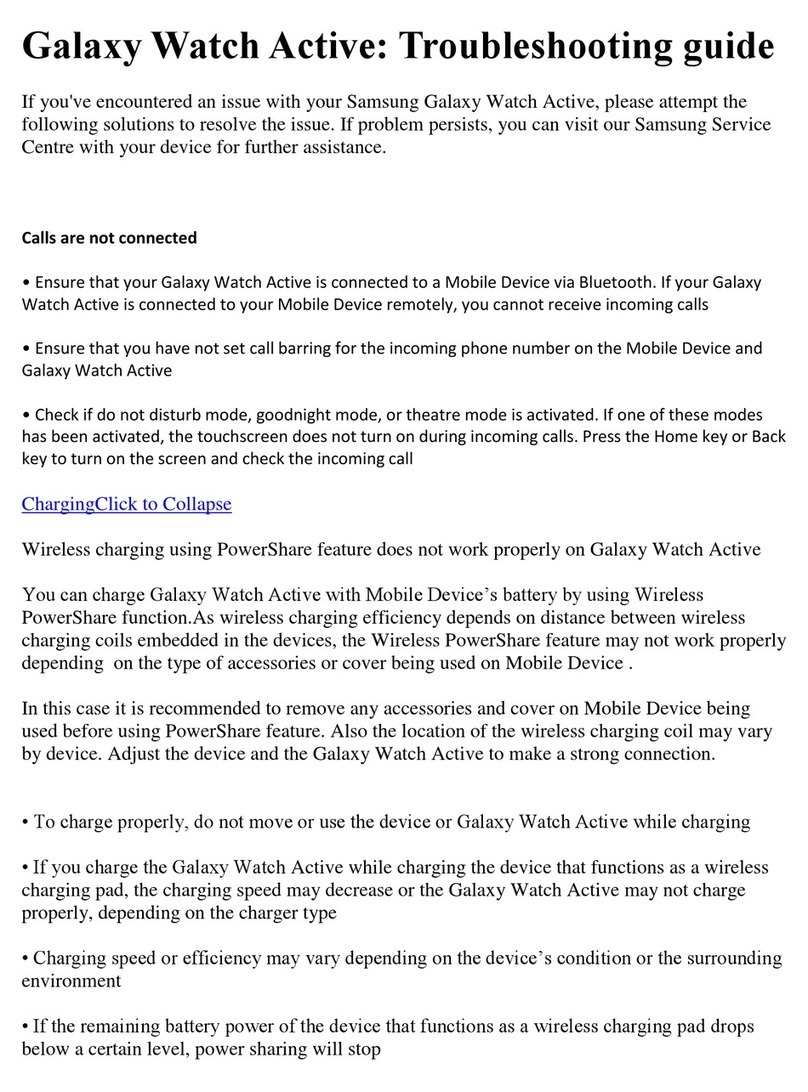2) Press Abutton to stop/restart Timer. EL Light
turns On when
Bbutton is pressed while Timer is
running.
3) Press
Bbutton when Timer is stopped to return
to initial set time.
• If switched to another mode from initial Timer
setting, Timer running or Timer stop mode and then
reset to Timer, function will return to the mode set
at the time of switching. However, if Timer
countdown is finished, the watch will return to initial
Timer setting.
6. EL Light
EL Panel
El (electro-luminescence) panel is a fluorescent panel
which becomes illuminant when voltage is applied
to it.
EL Illumination
EL panel will illuminate:
1) When
Abutton is pressed and held in normal
Time or Calendar mode.
2) When
Bbutton is pressed to display Split Time or
Abutton is pressed to stop Chronograph
counting in Chronograph mode.
3) When
Bbutton is pressed and held in TImer
countdown mode.
7. All-Reset Function
UseAll-Reset function when battery has been
replaced or the watch indicates or operates
abnormally.
1) Pull out crown
2) Press
A,
Band
Mbuttons simultaneously.
All digital displays disappear.
3) Release three buttons.All digital displays are
shown.
4) Push back crown. Buzzer sounds in confirmation.
After completing all-reset procedures, adjust
displays in each mode.
8. HowTo UseThe Rotating Bezel
(Some models are not equipped with the rotating
bezel).
Many yacht races are set in triangulated course
layouts such as the one described here where the
winner is the boat that navigates the designated
course around the marks in the fastest time.
Direction: Navigational bearings are most often
given in terms of degrees.
North: 0° East: 90° South: 180°
West: 270°
Starboard: The right-hand side
of a yacht looking forward.
Port: The left-hand side of a
yacht looking forward.
Using the rotating bezel (1)
1) Before a race, determine the direction of the wind
from the direction and position of the windward
marker. Line up the number representing the wind
direction (in degrees) on the bezel with the
triangle () mark at 12 o’clock.
(Ex.: northeasterly wind at 45°)
2) The course bearing from the windward mark to
the wing mark (starboard reach) is read off the
bezel, in degrees, at the green triangle () on the
bottom of the left side of the dial.
3) The course bearing from the wing mark to the
leeward mark (port reach) is read off the bezel, in
degrees, at the red triangle () on the bottom right.
4) When sailing from the windward mark to the
leeward mark, the small, white triangle at the
bottom of the watch dial becomes the reference
point for determining course bearings.
Note that the above explanation is only valid for
times when the
angle is 45°.At 60°, use the
values lying above the red and green triangles; at
30°, use the values lying below the two triangles.
Using the rotating bezel (2)
Most present-day yachts are capable of sailing at
45° to the wind.
To be in a position of being able to read the wind
shift after the start of a race,
make several runs before the
race matching your course as
close as possible to the red (or
green) bars on the left (or right)
upper portion of the watch face.
Using the rotating bezel (3)
By using the rotating bezel in the following way you
can determine the angle between the start/finish line
and the direction from which the wind is blowing.
The start/finish line is usually set at right angles to
the direction of the wind, but because the wind is
always shifting direction, it is a rare occasion when a
true 90° angle is met.
In this case, line up the white triangle at the 12
o’clock position on the watch with the direction from
which the wind is blowing. Sail from one end of the
start/finish line to the other, using the white lines
marked (at 3 or 9 o’clock) on the watch to site your
destination. If the course steered falls on the plus (+)
side of the white line, you are on a favourable heading
to start the race when you cross the start/finish line.
If the course steered falls to the
minus (–) side of the white line on
this watch, you know it is
favourable to cross the start/finish
line on a heading from the
opposite direction.
• Use any one or a combination of the three
methods described above to help you manoeuvre
your boat into and maintain the position you feel is
the most advantageous during a race.







